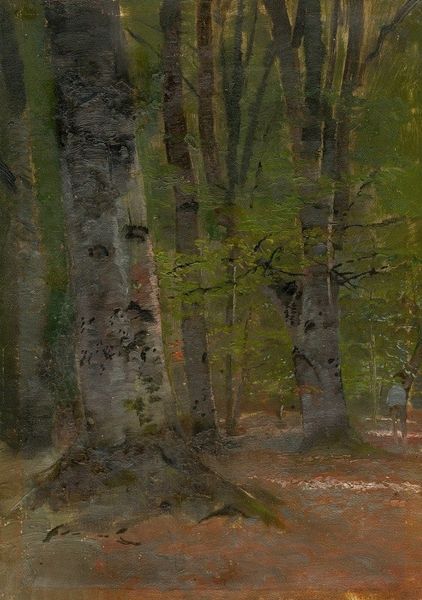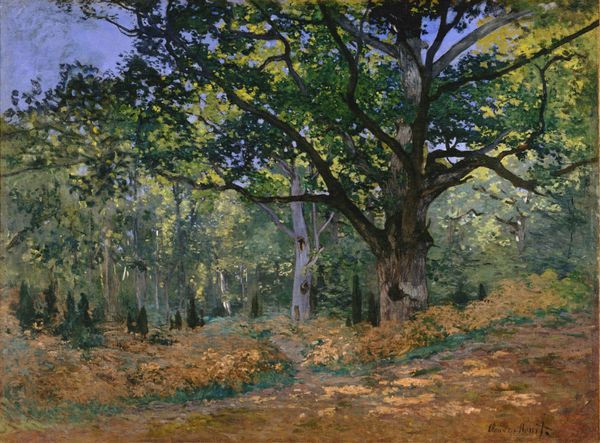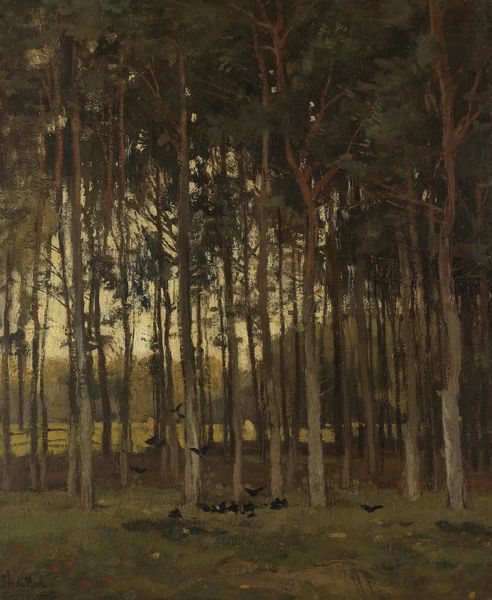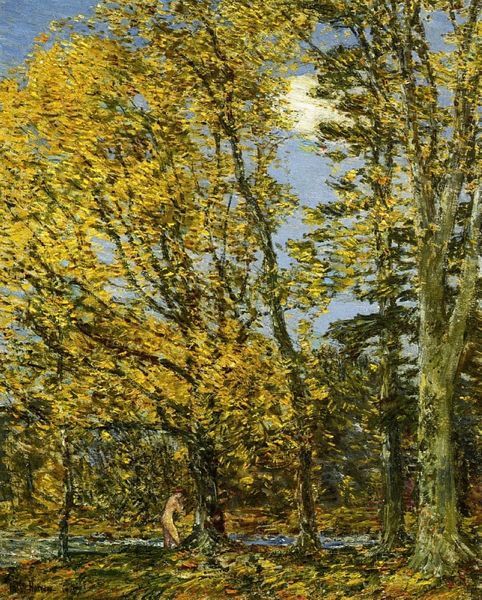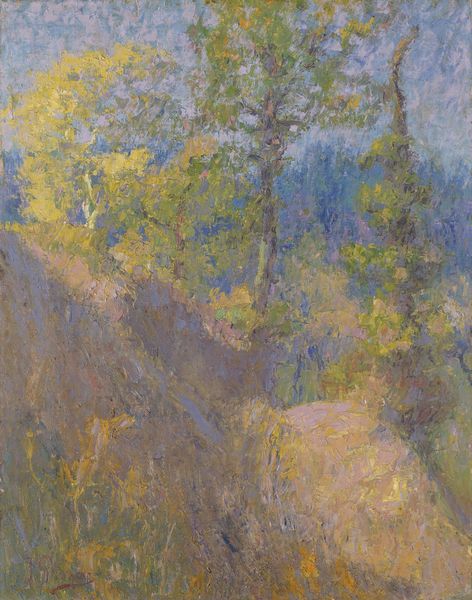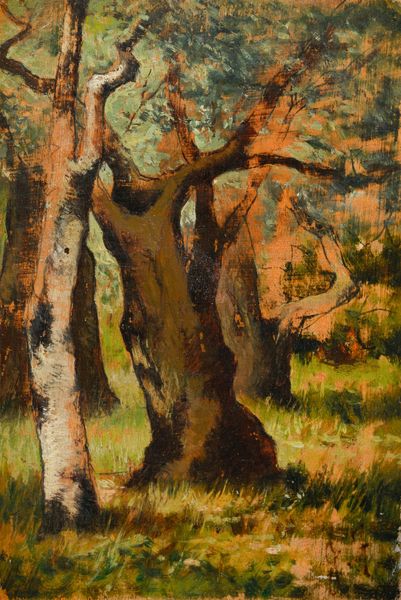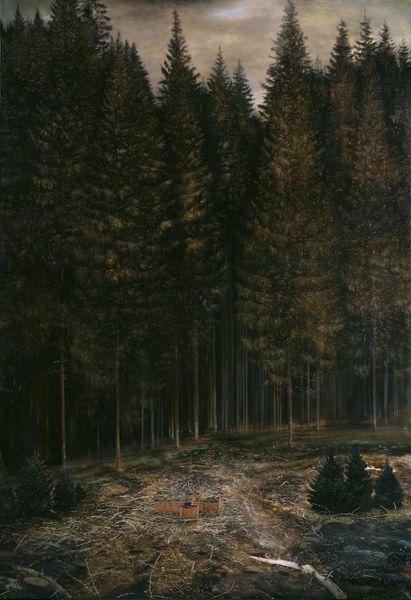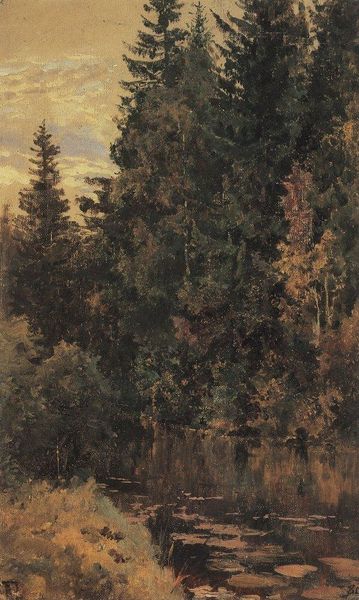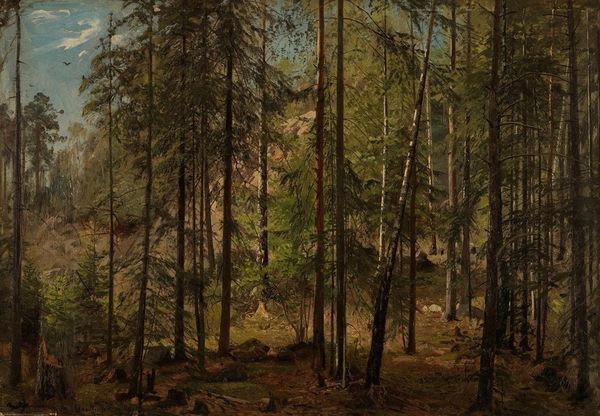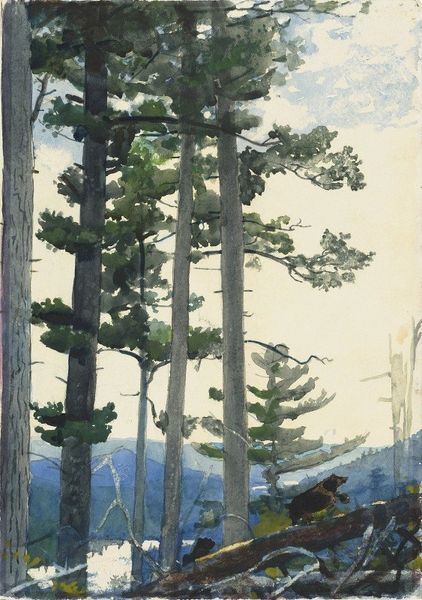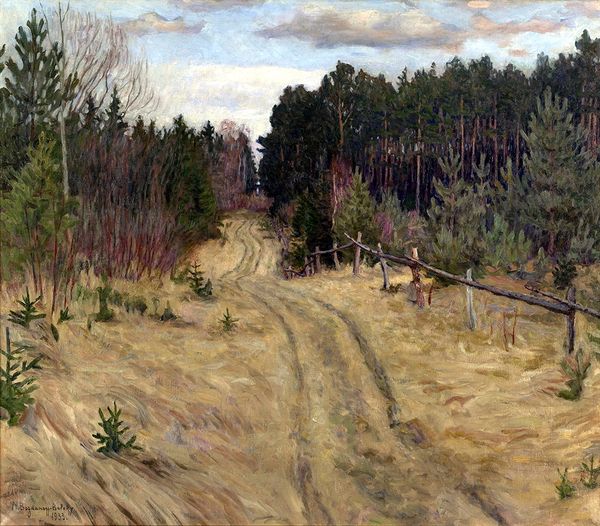
Copyright: Public domain
Editor: Here we have "Forest Section," an oil painting created in 1887 by Hugo Mühlig. It gives me a very specific sense of quiet observation, a stillness within the woods. What strikes you about it? Curator: This painting invites us to consider our relationship with the natural world, and to question the dominant narratives surrounding landscape art, especially from a time when industrialization was dramatically changing the environment. What stories do we tell ourselves about nature? This image feels like a slice taken out of something larger, revealing human intervention. Editor: Intervention, how so? Curator: Look at the subtle shifts in tone and the visible ground; what looks initially like natural overgrowth also resembles forestry or land clearing. It presents an interesting duality: are we looking at the beauty of nature or its exploitation? Consider who benefits from such landscapes and whose stories are left untold when nature is portrayed solely as a picturesque ideal. Editor: That's a perspective I hadn’t considered! I was so caught up in the, almost impressionistic, way the light filters through the trees. Curator: The ‘impressionistic light’ can distract us from seeing the less romantic realities embedded in the scene. Who had access to these landscapes? What labor shaped them? Can we see traces of that labor in the composition itself? Think about class, think about labor practices, and question what it means to capture "nature" on canvas in a time of profound social and environmental transformation. Editor: So, seeing this "forest section" not just as a pretty view but as a record, however subtle, of complex social and political dynamics at play? Curator: Exactly. Art is never created in a vacuum, it’s intrinsically linked to the prevailing discourses of its time. Thinking critically allows us to unpack those embedded narratives.
Comments
No comments
Be the first to comment and join the conversation on the ultimate creative platform.
